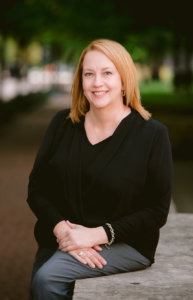Curiosity and Vulnerability
March 17, 2023
To Inspire:

This year we’re sharing insights from some of the books we find inspirational and informative. Matt Palmer recently talked about Arthur Brooks’ newest offering, “From Strength to Strength: Finding Success, Happiness and Deep Purpose in the Second Half of Life.” (If you missed that, read it here.) This week, I (Michelle) have been reading “Atlas of the Heart” by Brene Brown.
Early in her career, Brown asked training workshop participants to list all the emotions they could recognize and name as they were experiencing them. Over five years she collected responses from 7,000 people. The average number of emotions named was three – happy, sad, angry. Brown says, “language is our portal to meaning-making, connection, healing, learning, and self-awareness. Having access to the right words can open up entire universes.” Only having three words for emotions does not promote well-being and connection!
In this book Brown explores 87(!) emotions and experiences in an attempt to help us map the language of our experiences. Understanding and being able to name our feelings, experiences and emotions gives us the power of understanding, meaning, and choice. We need to be able to name and understand emotions and experiences so we can live our best life and understand and help others.
Here’s a brief look at three of the 87 words.
Vulnerability
Vulnerability is the emotion that we experience during times of uncertainty, risk, and emotional exposure. While many have been raised to believe that being vulnerable is being weak, the reality is there is no courage without vulnerability. Courage requires the willingness to lean into uncertainty and risk. It takes courage to show up in situations where you can’t control the outcome. It takes courage to be able to share your real self with the important people in your life.
Interest and Curiosity
Interest and curiosity – are they the same? Interest is generally recognized as a state of being open to engaging with something – a topic, or activity, or experience. Curiosity is a little more. It is recognizing that you have a gap in knowledge about something that interests you, and becoming invested in learning more. Curiosity starts with interest then moves on to deeper interest. It can even be really focused – I’m sure you’ve heard the phrase “I really went down a rabbit hole reading about…” meaning you started learning about something, then ended up interested to the point of distraction.
But the real difference between the two is one is head, and one is heart. With interest, your mind is open to seeing what’s there, but with curiosity, you see that gap in knowledge and both your head and your heart are invested in closing the gap. There is the thinking part plus the emotional experience and satisfaction of learning more.
And to circle back to vulnerability, choosing to be curious is choosing to be vulnerable because it requires you to give into uncertainty. To be curious is to ask questions that you don’t know the answer to, to admit that you don’t know about something, and, potentially, to learn things that lead to discomfort. Sometimes, too much curiosity, just like too much vulnerability, can lead to hurt. But we can’t let that stop us from being curious and vulnerable.
Choosing the things we already know versus learning new things may feel safe, but that’s taking the easy way. Einstein said, “The important thing is not to stop questioning. Curiosity has its own reason for existence.” Curiosity is not simply about acquiring new or expanded knowledge. It has ties to creativity, intelligence, improved learning and memory, and problem solving. Curiosity reminds us we are alive. Be vulnerable and let your adventurous and curious heart help you build the meaningful connections that will bring so much to your great life!

Written by Michelle O’Brien, Manager of Marketing & Communications